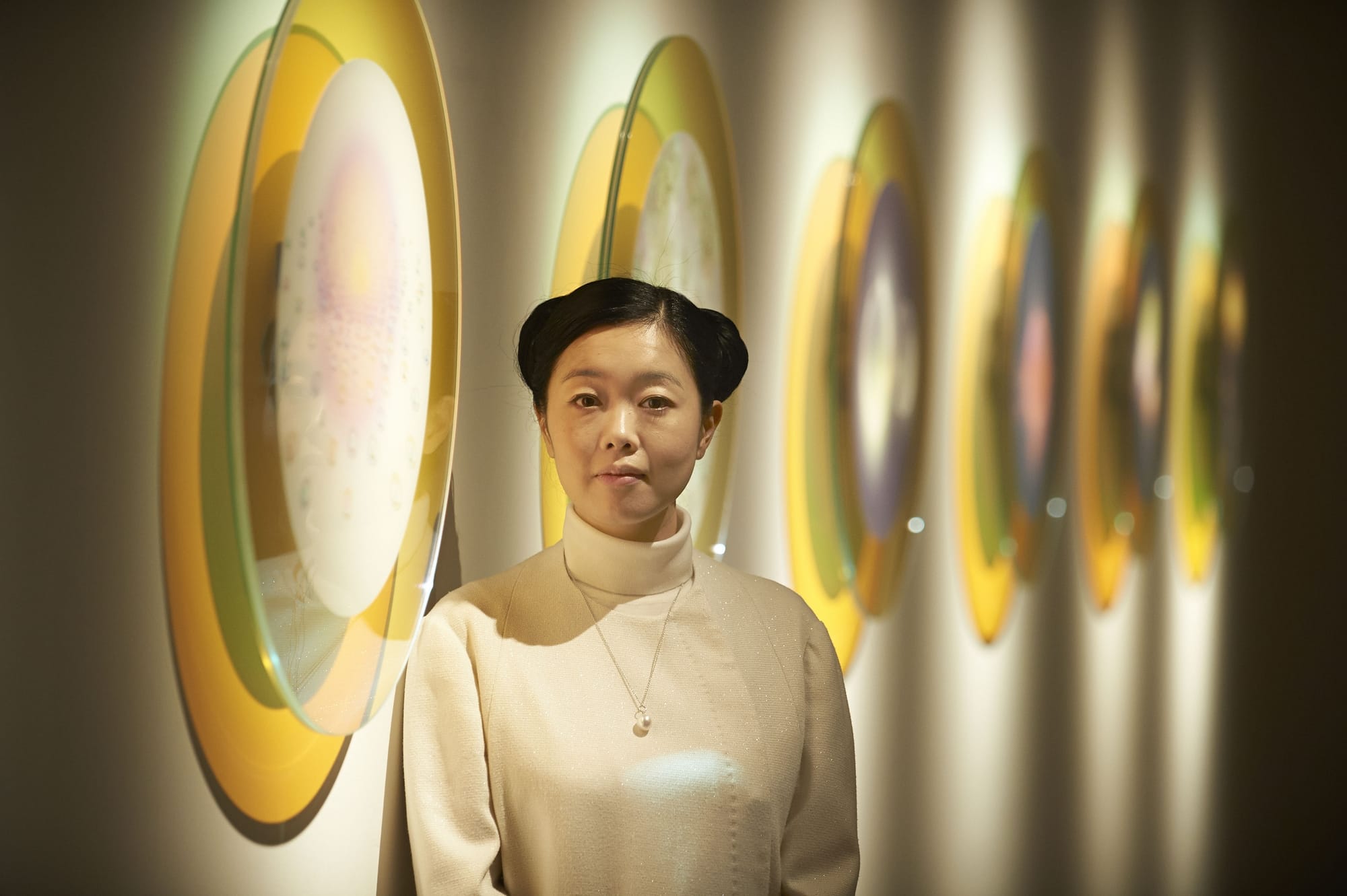Established Japanese artist Mariko Mori is known for everything from photographs to installation and video art, but perhaps some of her most impressive works are her ethereal large-scale sculptures. They are mostly made of glass and translucent acrylic, creating majestic, gigantic bodies that seem barely there.
As an acclaimed international artist, her work delves into profound questions intersecting life, death, reality, and technology. Widely collected by museums and private enthusiasts worldwide, Mori gained prominence through her interactive installation, Wave UFO, debuting in 2003 at Kunsthaus Bregenz and subsequently exhibiting globally. Another notable work, Oneness, showcased at various international venues, solidified her reputation.
Her work frequently tackles themes of nature and the environment, instilling a sense of connection and responsibility for the earth. Through this interconnectedness of all living things, Mariko’s work coincides with the need for global collaboration to combat climate change, reflecting the United Nations Sustainable Development Goals for Climate Action.
One prominent example is her permanent installation, Primal Rhythm at Miyako Island, Japan. Gifted by the Faou Foundation to the Gaia Art Association, the site-specific work comprises two large sculptures: First is the Sun Pillar, a translucent column that sits atop an offshore rock. The column has been positioned to cast a ceremonial shadow across the bay each winter solstice. Meanwhile, the second half, Moon Stone, is a sphere that changes colours according to the tides.
Though breathtakingly beautiful, this piece can be read as a warning. The Sun Pillar marks the winter solstice loud and clear. in ancient Japan, people regarded the winter solstice as "the sun's power getting weak [er], the day that death is impending." Meanwhile, the Moon Stone highlights how sea levels have been steadily rising in Japan. The G20 Climate Risk Atlas shows that Japan will experience worse climate impacts should it continue its high-emissions pathway, with rising sea levels, coastal erosion, and changing storm patterns that could expose 4 million people to devastating floods by 2050.
Hence, The Sun Pillar and theare Moon Stone is a call to war against climate change, urging Japan to follow a low-carbon pathway and invest in climate-resilient infrastructure.
Mori’s commitment to the cause also extended to how the sculptures were constructed in 2011. Towering at 13 feet and nine inches, the artwork weighs a massive 2.9 tons and was made entirely of layered acrylic. During installation, workers paid special attention to ocean, wave, and tidal conditions, and worked without the help of any machinery. This was done to respect the bay's already delicate coral and rock formations, a condition that will only worsen if climate action is not taken.
Mori's solo exhibitions span the globe, gracing esteemed institutions such as the Royal Academy of Arts in London, the Japan Society in New York, and The Museum of Contemporary Art in Tokyo. Renowned museums, including the Guggenheim Museum in New York and the Israel Museum in Jerusalem, have not only hosted her solo exhibitions but also added her works to their prestigious collections.

Among her accolades, Mori received the Menzione d’onore at the 47th Venice Biennale in 1997 and the 8th Annual Award for Promising Artist and Scholar in the Field of Contemporary Japanese Art in 2001 from the Japan Cultural Arts Foundation.
In Mariko Mori's enchanting sculptures, the ethereal meets the urgent. From Wave UFO to Sun Pillar and Moon Stone, her works explore life, death, and humankind’s environmental responsibilities. With delicate grace, Mori issues a call to combat climate change, as seen in the symbolic warnings of rising sea levels in Japan. As her art graces prestigious museums globally, Mori's creations serve as luminous beacons, urging a collective embrace of a low-carbon future. In this fusion of art and activism, she sparks contemplation and champions society’s interconnectedness with nature.
